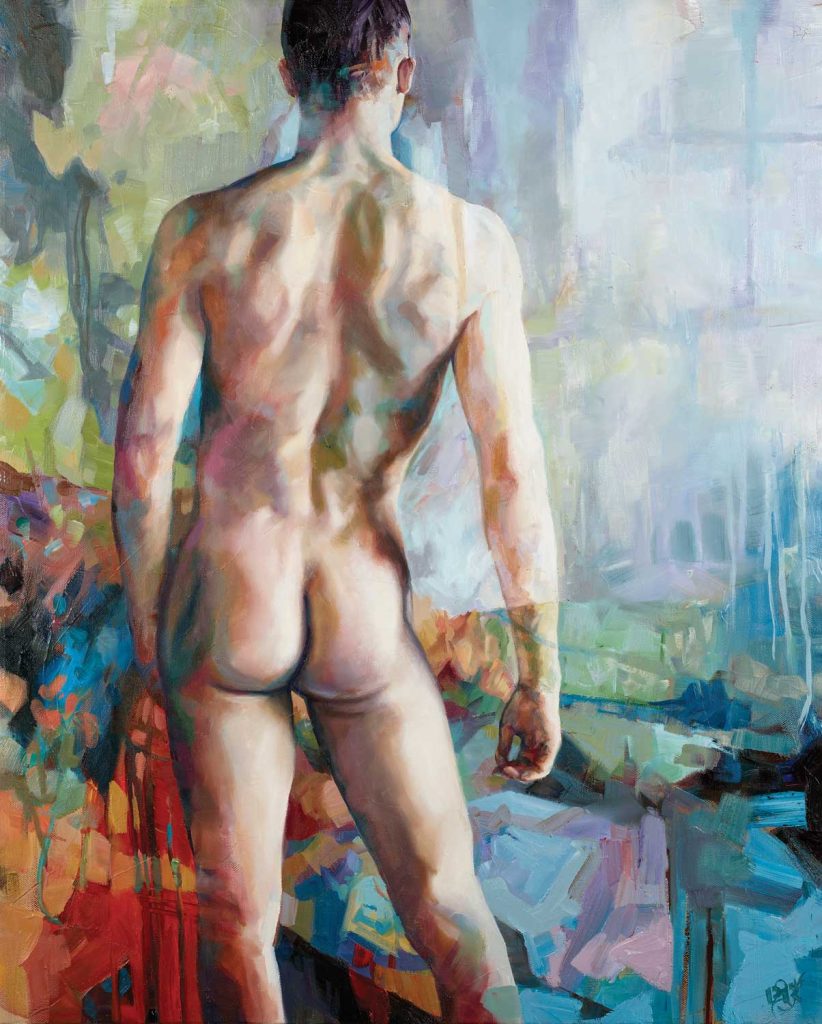ON THE COVER
Artist Spotlilght: A Life On Canvas
~ by joel martens ~
Paul Richmond grew up in a suburb of Columbus, Ohio called Grove City, a small, conservative community filled with as he described, “Some wonderfully loving and eccentric people sprinkled throughout.” He moved to California two and a half years ago to pursue a career opportunity for his husband Dennis, another Ohio native. It was an easy decision because as an artist, Richmond could work from anywhere. The move was a good decision and as he said, “It has turned out to be a wonderful change for me too, although we both miss our friends
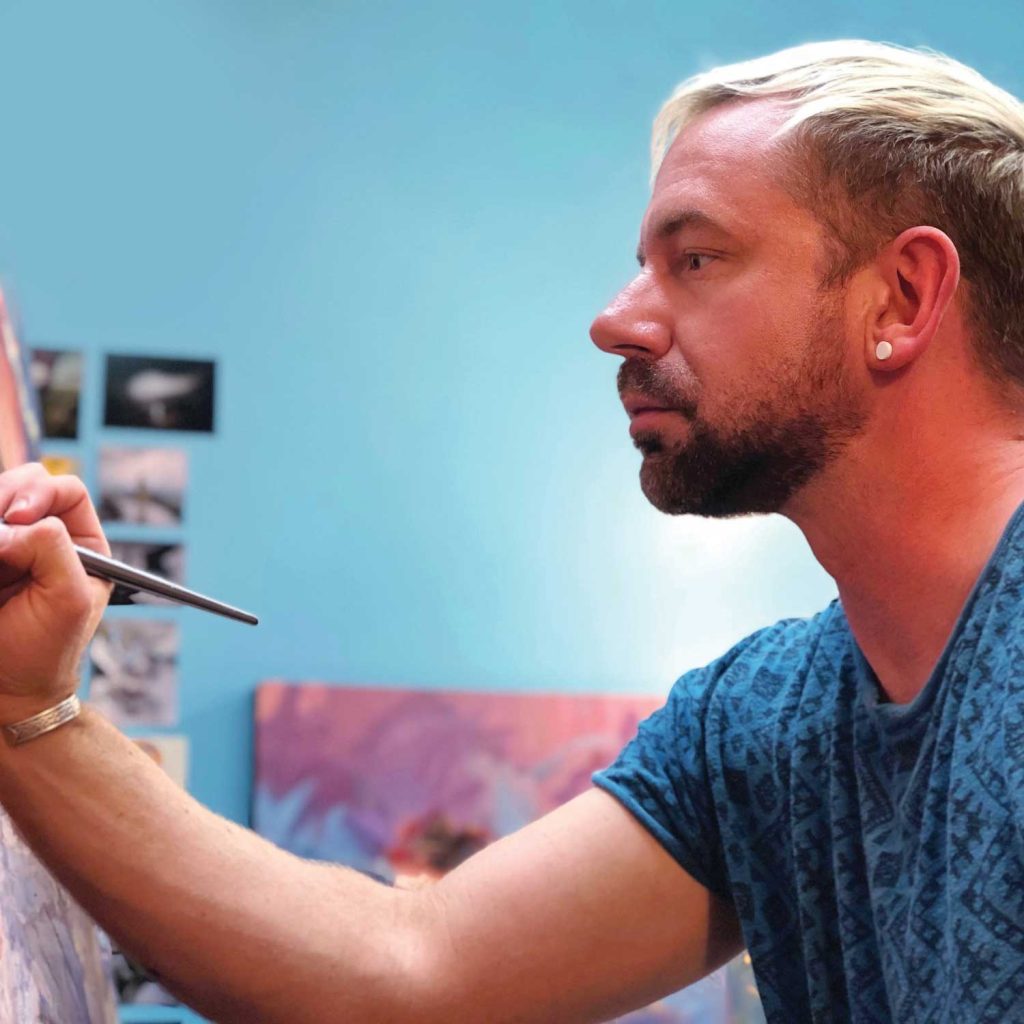
Richmond discussed the beginnings of his career as a painter and what drove that passion. ”As a child, I drew constantly, my parents said I made over two hundred drawings before they woke up each morning. Granted, these weren’t masterpieces, but somehow I always knew this was what I wanted to do.” Even though the arts were a pretty foreign concept in his household, Richmond’s parents were wise enough to seek a mentorship in the form of local artist, Linda Regula. “Linda took me under her wing and began teaching me to oil paint in her studio when I was three. From then on, I’ve never had a backup plan. I went to Columbus College of Art and Design and have been working as an artist
ever since.
Art is an outlet for many when deeper truths aren’t as easily expressed. We asked Richmond how much artistic expression played a part in his coming out process. “I had a lot of Catholic school guilt to work through before I came out of the closet. Even after telling a few friends when I was in my early twenties, it was another year before I broke the news to my parents. The time between, I started making paintings about the experience of grappling with my sexual identity. I had no intention of showing them to anyone and ironically, they got stored in the closet as soon as they were completed,” he shared. “Painting was always how I worked through issues, so even without sharing them, they were an important part of my process.”
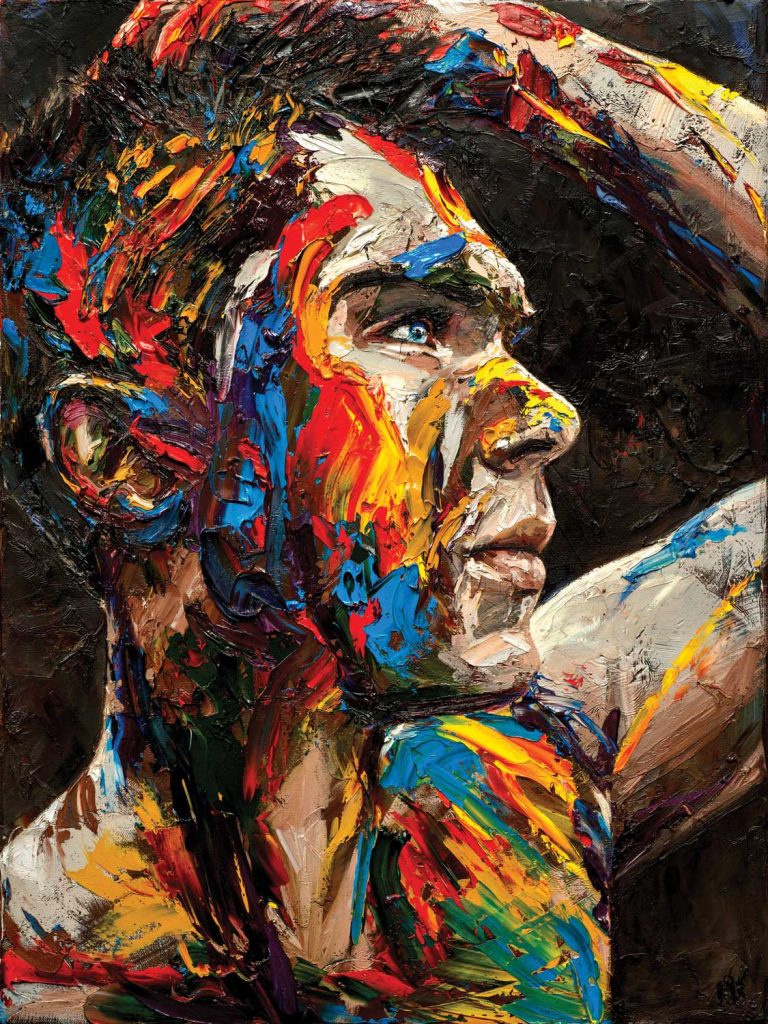
“My friend Melissa saw them and encouraged me to submit them to juried art shows.” Richmond continued. “I was reluctant because I didn’t think anyone would be able to relate to such personal paintings—or worse—what if they did and thought I was a terrible person? What if my family saw them somehow? They became a symbol of my own shame, and when I finally started displaying them and connecting with others who appreciated them, that shame diminished. Ever since I came out to my family, I have tried to be as authentic as possible in my life and art.”
Creation is such a personal process. Richmond discussed how it all works for him, whether imagery is first to come or if it’s a central idea that begins his process. “I like creating a body of work around a central concept, so usually there is an inkling of an idea first. I try not to lock into anything too specific so there’s wiggle room throughout the creative process,” he offered. “Several years ago, I became fascinated with body painting throughout the world and decided to create a series called War Paint that portrayed figures coating their faces and bodies with pigments to express their inner selves. This concept gave me the freedom to try being more expressive with my work.”
“Previously my paintings were tightly rendered with smooth brushstrokes,” Richmond continued. “Now I could build up thick layers of paint on the canvas and use other tools like a palette knife to smear it around.”

That series opened the door for the type of work he creates today, including his recent show, Promiseland, which deals with figures exploring a metaphorical amusement park. He next discussed his new inspiration and collection, “I am just beginning work on a new series called The Masks We Wear for a show in October that portrays nude, masked figures. I have new ideas every day and store them all in folders on my computer and in sketchbooks around my home and studio so that as one project ends, I can jump into the next.”
As to what he hopes people get from his work or a specific reaction he hopes to elicit from his viewers, Richmond shared this. “I am fascinated by people, which is why most of my paintings are figurative. I love trying to portray something more about a person than just their outward appearance. My hope is that viewers will appreciate the individuality of my subjects,” he revealed. “In a world where our socio-political ideas are often reduced to headlines and tweets and we categorize everyone we meet at first glance, I think there’s something vital about artwork that invites people to take their time and appreciate the complexity of another human being.”
The depth of paint applied to his work feels almost a reflection of the multiplicity of the human experience. Each brushstroke and color layer offering up a facet of his subject’s nature—or better yet—an expression of everything that makes them who they are. As we discussed that idea, Richmond humorously offered, “That’s a wonderful way to describe it! Can you write my next artist statement, please?” (Laughs) “When I start a painting, the base coat is always an abstract field of colors and brushstrokes that for me evoke the emotions I hope to convey in the finished work,” he described. “Then I set about finding the image within the chaos, reacting to and building upon lines and shapes that happened completely by chance. It’s a process of deconstructing in order to gain some understanding of what that painting is about. I like leaving remnants of each layer visible in the finished work to underscore the idea that there’s more than what meets the eye.”
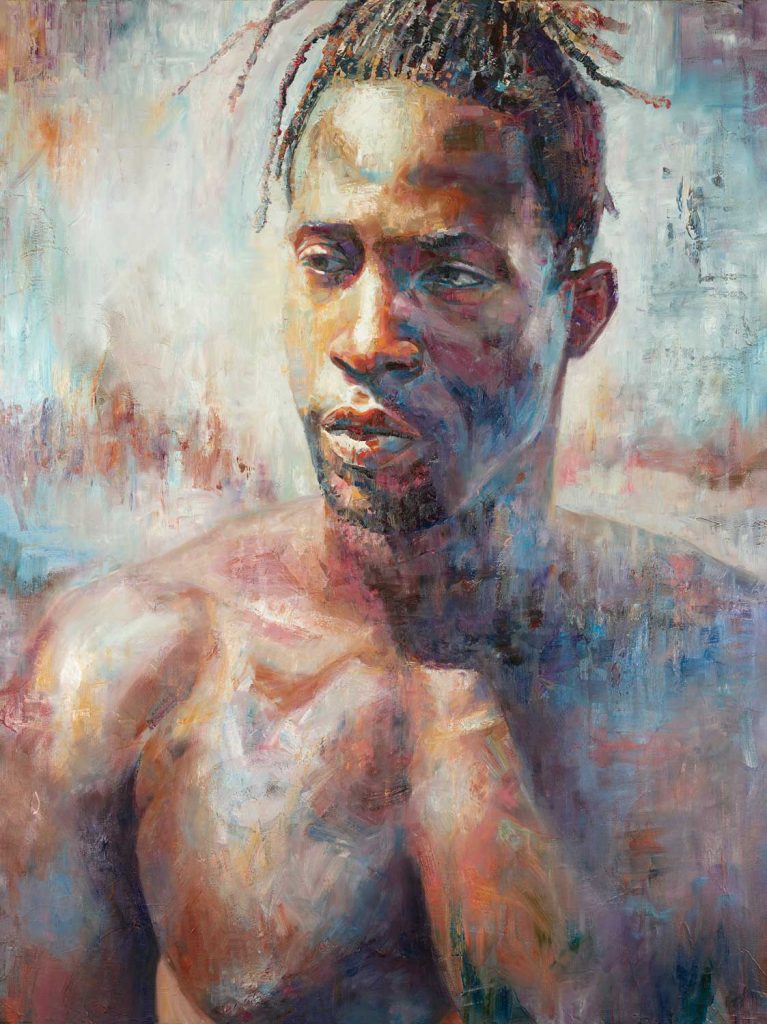
His style is quite varied and broad, he described how that technique has evolved over the years and whether or not it reflects a certain period or emotional experience he was having. “One of the things I love most about being an artist is that there’s always more to learn. They sometimes tell you in art school to pick one style and consistently produce work like that your whole career in order to build a collector base. I know some artists do that very well, but it would bore my pants off!” Laughing as he continued clarifying his ideology even more, ”I enjoy being able to make paintings like War Paint and display them in galleries and museums while simultaneously publishing an adult coloring book of male pinup drawings (like his Cheesecake Boys).
He talked about how fortunate he has been to find collaborators and collectors who accept his multi-dimensionality. “My style weaves back and forth between realism and abstraction, usually incorporating aspects of both to varying degrees. There are common threads of personal narrative, self-expression, and the questioning of societal constructs around gender and sexuality.”
Richmond started an anti-bullying campaign under the name, You Will Rise Project. He describes the organization and its mission.“It’s an anti-bullying organization I started with Linda, my childhood art teacher. The You Will Rise Project is designed to empower those who have experienced bullying to speak out through the arts,” he shared. “Many young people who are targeted and ostracized by their peers don’t have an outlet to express what they’re going through. Our project is about giving them a voice.”
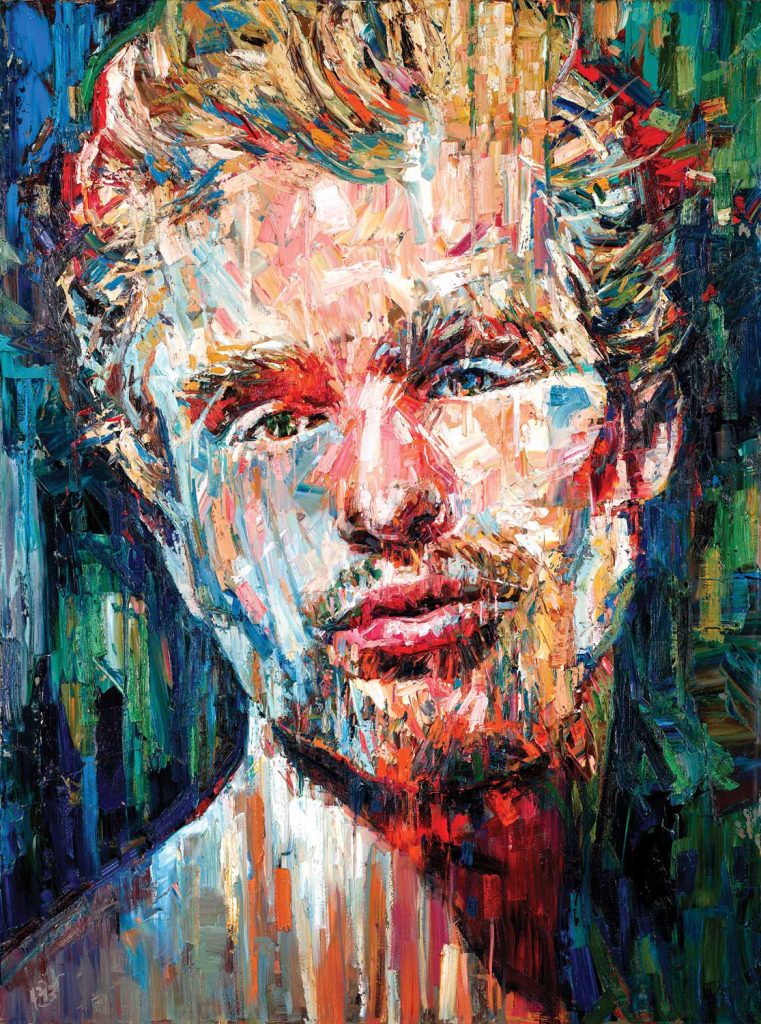
“We publish submissions of visual art, performance art, writing, music, and all other forms of creative expression that relate to the individual’s experiences with bullying on our website,” he continued. (youwillriseproject.com) “We lead workshops and host exhibitions for young people around the country, and we create large-scale public art installations that bring attention to these issues. I’m just getting ready to go to Cornell University this spring with three other members of the You Will Rise team, we will be visiting artists for a week and create a large installation.”
The creation of such an outstanding organization is often inspired by deeply personal experiences. We wondered if bullying played a part in Richmond’s childhood and if it was the inspiration for his creative expression as an artist.“I was bullied mercilessly as a kid. I was tall, awkward, uncoordinated, shy, and much more effeminate than boys were supposed to be in my small Catholic school,” he shared. “I didn’t know what gay meant in middle school, but my classmates could tell I was ‘different’ and they made life miserable.
“There were several times I contemplated suicide,” Richmond continued. “But, it was always art that brought me back. In my classes with Linda, she encouraged me to paint my feelings. One of the first pieces I made after this suggestion was called The Piece That Doesn’t Fit. It depicted a young boy in a floating puzzle piece that didn’t fit into the background puzzle. Expressing ideas that I couldn’t even put into words helped me immeasurably, and the goal of the You Will Rise Project is to pay that forward to other young people.”
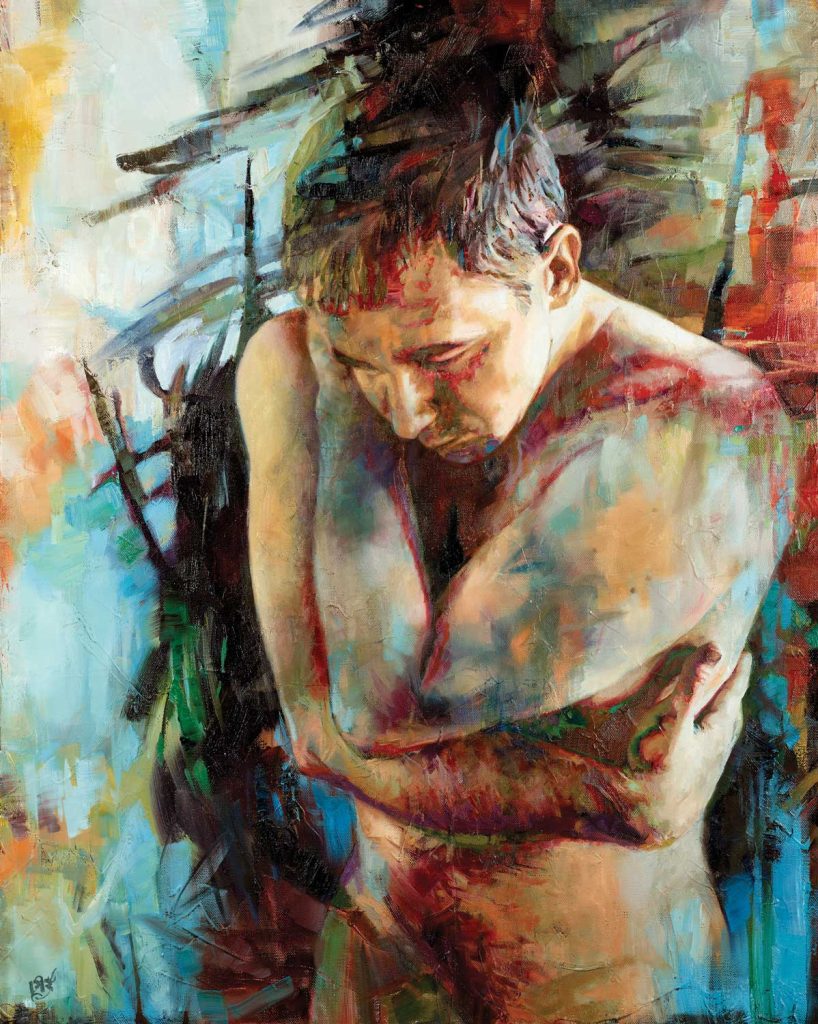
We discovered that Richmond has a second career and does a great deal of work as a cover artist, illustrating book jackets for the LGBTQ publishers Dreamspinner Press and their young adult publisher Harmony Ink Press. We wondered what it was like to create art for other people’s stories and how it differs from creating his own. ”I studied illustration in college, so book cover art is a natural fit for me and I love the opportunity to create imagery for so many wonderful novels,” he shared. “Working with Dreamspinner and Harmony is a dream come true. I believe in the work we are doing because everyone should be able to find characters that they relate with in books. I can’t imagine the difference that would have made for me when I was younger.”
“With cover art,” Richmond continued, “I try to distill the concept of the novel down to a single image that will entice readers without giving away too much. Covers have to work at the size of a postage stamp because most people will encounter them that way when scrolling through Amazon or other online booksellers. It’s a different mindset than when I have the freedom to do whatever I want in a painting, but I enjoy being able to do both and I think each process benefits the other. Ultimately, it’s all visual storytelling… and I love a good story!”
Paul Richmond lives in Monterey, California with his partner, Dennis, and their two whippets. He also teaches at Open Ground Studios in Seaside. For more information on his work or to view his many stunning pieces, go to paulrichmondstudio.com.
